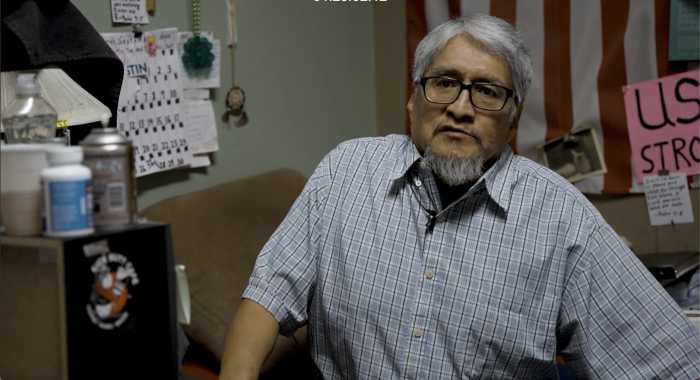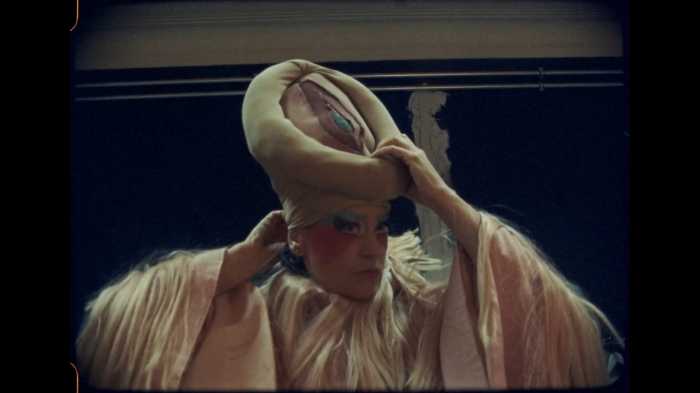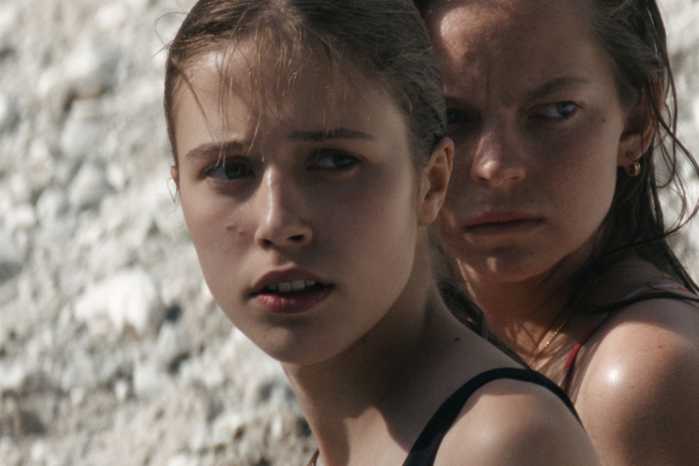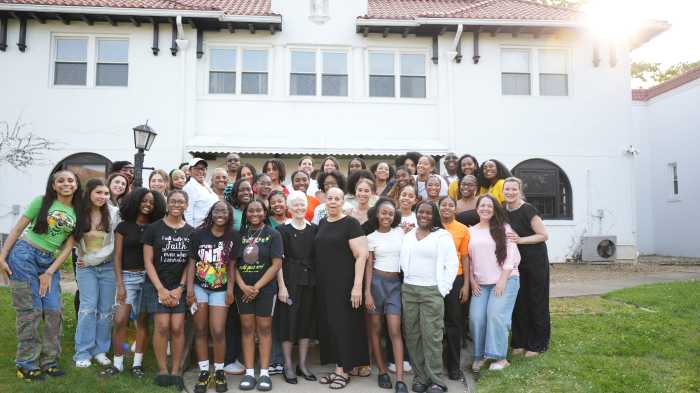My experience of the 2024 New York Film Festival (NYFF) was unusual. To be entirely frank, health issues kept me from attending the majority of the NYFF’s press screenings in person. Since the biggest distributors tightly control access to their films, my viewing revolved around the experimental Currents section.
One longstanding issue with the festival has been that its Main Slate consists of a preview of the next 6 months’ New York arthouse releases, no matter how good the films may be. (This year, it opens with RaMell Ross’ Colson Whitehead adaptation “Nickel Boys” and closes with Steve McQueen’s “Blitz.” It also includes gay director Alain Guiraudie’s “Misericordia” and the queer Vietnamese love story “Viet and Nam.”) So I was not able to preview three of this year’s most prominent LGBTQ-themed films — Jacques Audiard’s trans musical “Emilia Perez,” gay director Luca Guadagnino’s William S. Burroughs adaptation “Queer,” and a documentary on Elton John made by his husband — but I did get to see many of the unabashedly uncommercial films in Currents, which include a tribute to iconic queer author James Baldwin and a nature documentary by gay French filmmaker Pierre Creton. The Revivals section includes two extremely different features by gay men: Filipino director Lino Brocka’s 1980 melodrama “Bona” (opening for its first U.S. release in December) and Clive Barker’s horror classic “Hellraiser.”
Pedro Almodovar’s dramas can be a bit too mature for their own good, but “The Room Next Door” skirts most of the gay Spaniard’s more staid impulses while staying fairly restrained. As a pair of friends guiding each other to life’s end, Julianne Moore and Tilda Swinton both give fully lived-in performances. The plot — and Almodovar’s attitude towards it — may be challenging to describe without falling into clichés. One of the side characters is a nihilistic doomer, but “The Room Next Door,” adapted from queer author Sigird Nunez’s novel “What Are You Going Through,” avoids such an attitude by embracing life only on its own terms. While signing her book at Rizzoli, Ingrid (Moore) learns that her old friend Martha (Swinton), a former war correspondent, is struggling with terminal cancer. Even though they grew apart years ago, Ingrid visits Martha in the hospital, and they become closer than ever. Martha insists that she can’t take any more pain, planning to kill herself with a pill ordered off the dark web. Ingrid goes along with her to an Airbnb, where they plan to spend Martha’s last few weeks together.
The clothes and décor of “The Room Next Door” are impeccably fashionable. Even the cancer ward looks like a layout from an upscale fashion magazine. Against this palette of bright colors, Martha’s decline is all the more noticeable. The film makes a few missteps. It relies too heavily on flashbacks early on. A scene in which an arrogant, conservative cop interrogates one of the women only plays as Almodovar grandstanding in favor of the right to euthanasia. The rest of the time, Almodovar picks up where his thoughts about aging in his last feature, “Pain and Glory,” left off. There, Antonio Banderas played a stand-in for the director; here, Martha is much further along the path to the end of her life, but the concerns are much the same. Given this story, “The Room Next Door” is far from a downer; it insists on the importance of friendship as a hedge against life’s cruelty.
The informal title of Yashaddai Owens’ “Jimmy” is a cue that the film will not be a typical biopic. It follows James Baldwin for a brief period when he left the U.S. to live in Istanbul and Paris; the time frame isn’t clear. Owens, who also works as a photographer, takes an impressionist approach. For the scenes in Istanbul, the camera represents Baldwin’s (Benny O. Arthur) point of view, as he wanders around the city.
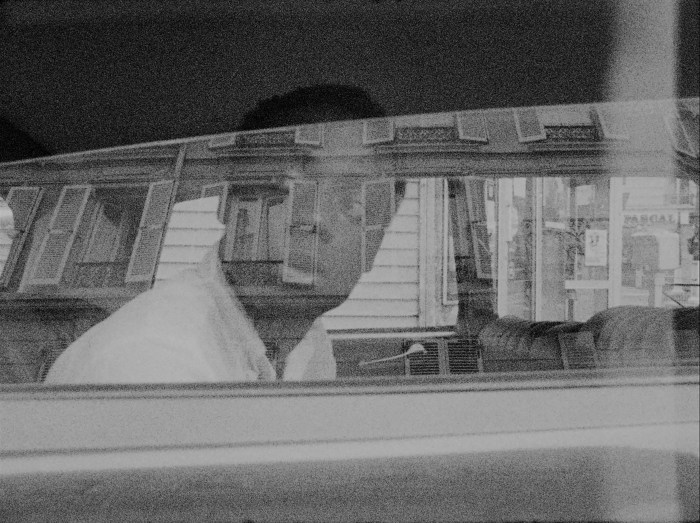
When he arrives in Paris, the film finally shows his face and voice for the first time. Dialogue is given little emphasis; instead, Owens’ 16mm cinematography and Paco Andreo’s score, mixing orchestral and jazz sounds, are active participants in Baldwin’s experience. Feeling liberated from American racism for the first time, he dances through the streets of Paris and playfully chases a man through his apartment building before sleeping with him. Owens’ black-and-white cinematography finds a wide variety of light and color within its images, which seems like a political point as well as an aesthetic one. It’s exciting to see such a thoughtful approach to the typically dreary run of movies about great artists. This is the exact opposite of Oscar bait.
Moving at a narcotic pace, Truong Minh Quy’s “Viet and Nam” demands great patience. It does not quite reward it. The film, which has already been banned in Vietnam, relates to the lives of coal miners, who find a space deep within their workplace to have sex. Going unnamed within the movie, they’re credited as Viet (Dao Duy Bao Dinh) and Nam (Phan Thanh Hai). Set in 2001, the film is concerned with the long-term impact of the Vietnam War: Nam and his mother are both haunted by the disappearance of his father, a soldier during the ‘70s. They travel to the border of Cambodia to look for evidence of his corpse. Facing pressure to marry women and raise children, Viet and Nam must keep their relationship secret. “Viet and Nam” simulates the experience of gradually losing the ability to focus while watching a film late at night. The dark, moody 16mm cinematography shows off Truong’s eye for framing dust and darkness, but overall, his style comes very close to a direct imitation of gay Thai director Apichatpong Weerasethakul. The film is most striking when Viet and Nam find love amidst the material effects of toiling in the mines, as when one wipes his semen off his partner’s nude body.
“You Burn Me” is an improbable blend of scholarship and desire. Since all but one of Greek author Sappho’s poems have survived in fragmentary form (the title comes from one), gay Argentinean director Matias Piñeiro’s film assembles a similar blend of shards. It all but calls out for footnotes. Its origins lie in a chapter of Cesare Pavese’s novel “Dialogues with Leico,” a four-page conversation between Sappho (from whom the word “sapphic” and the concept of lesbianism originate) and nymph Britomart called “The Foam Sea.” Piñeiro fills “You Burn Me” with images of the sea, even going back to the bacterial foam that became the first form of life on earth. (The 16mm cinematography is richly textured.)

Rather than adapt “The Foam Sea” in any straightforward manner, he adopts a form that’s equally poetic and mysterious. He begins by recognizing his own need to film the story, using repeated images — a hand reaching to an apartment buzzer, water running in a sink — as rhythmic motifs. “You Burn Me” is haunted by suicide: that of the characters in Pavese’s novel and the end of the writer’s own life. Yet it reimagines cinema, mixing several media and foregrounding the problems of translation, to do justice to the achievements of Sappho. Although rather opaque on a single viewing, it’s stimulating in the manner of Jean-Luc Godard’s late films, encouraging one to do further research to appreciate it.
French director Pierre Creton makes a living as a farmer, working in rural Normandy. He’s teamed up with Vincent Barré for a series of nature films, the latest being “7 Walks With Mark Brown.” This just might be the most soothing entry in the entire festival. Brown, a botanist, identifies plants in a soft, near-ASMR voice. As the film reaches its end, it goes further back, towards a forest containing some of the oldest surviving plants on earth. If the notion of experiencing a nature hike through film is rather ironic, Creton and Barré lavish caring close-ups upon flowers and grasses. Creton’s recollections of having sex amongst these plants only add to an affection that one can’t miss.
62nd New York Film Festival | Sept. 27th-Oct. 14th | For full schedule and ticket information for these and other films, go to filmlinc.org.



